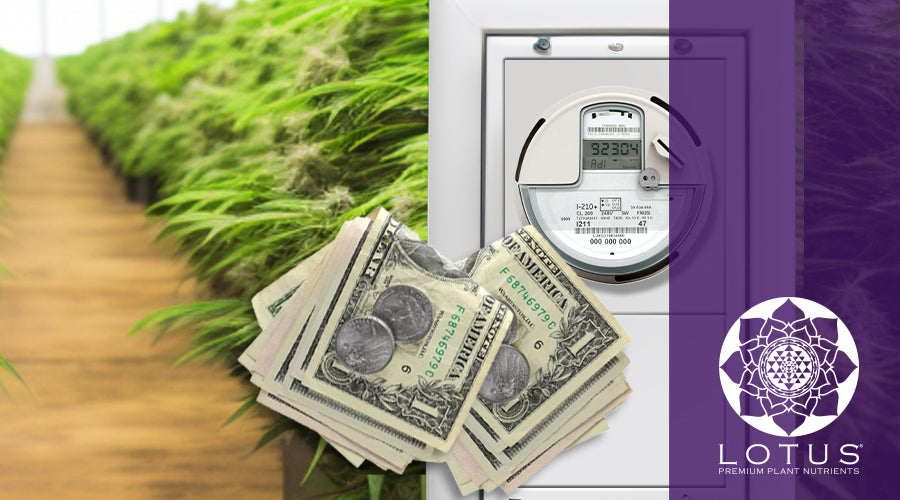
Do LED grow lights use a lot of electricity?
As the popularity of indoor gardening and hydroponics continues to rise, so does the interest in LED (Light Emitting Diode) grow lights. These energy-efficient lighting solutions have gained prominence due to their ability to mimic natural sunlight and promote plant growth effectively. However, a common question arises among indoor gardeners and enthusiasts: Do LED grow lights use a lot of electricity?
In this article, we'll delve into the energy consumption of LED grow lights, comparing them to traditional lighting options and exploring their benefits.

LED Grow Lights vs. Power Bills: How Efficient Are They Really?
Understanding LED Grow Lights
LED grow lights have revolutionized the way plants are cultivated indoors. Unlike traditional lighting options such as High-Intensity Discharge (HID) lamps or Compact Fluorescent Lights (CFLs), LEDs are designed to emit specific wavelengths of light that plants require for photosynthesis. This targeted light spectrum minimizes energy wastage and delivers more usable light to the plants, making LED grow lights significantly more energy-efficient.
Energy Efficiency of LED Grow Lights
One of the most significant advantages of LED grow lights is their energy efficiency. LED technology has evolved rapidly over the years, becoming increasingly efficient at converting electricity into light. Unlike conventional lighting options that emit a significant amount of heat, LED grow lights generate very little heat, which means less energy is wasted on heat production. This efficiency translates to lower electricity bills and a reduced carbon footprint.
Comparing Energy Consumption
To put things into perspective, let's compare the energy consumption of LED grow lights with other commonly used lighting options:
High-Intensity Discharge (HID) Lamps: HID lamps, including Metal Halide (MH) and High-Pressure Sodium (HPS) lights, are popular choices for indoor gardening. However, they are known for their higher energy consumption due to the heat they produce. On average, HID lamps consume 2-3 times more electricity than LED grow lights to produce the same amount of usable light.
Compact Fluorescent Lights (CFLs): While CFLs are more energy-efficient than HID lamps, they still consume more energy than LEDs for the same level of light output. Additionally, CFLs have limitations in providing the ideal light spectrum for plant growth, making them less effective in promoting healthy development.
Incandescent Lights: Incandescent bulbs are the least energy-efficient option and generally unsuitable for indoor growing plants. They emit a broad spectrum of light, including a significant amount of heat, which can actually harm plants if used in close proximity.
Benefits Beyond Energy Efficiency
Apart from their energy efficiency, LED grow lights offer other benefits that contribute to their popularity:
Longevity: LED grow lights have a longer lifespan compared to traditional lighting options, reducing the need for frequent replacements and further saving on costs.
Customizable Spectrum: LED grow lights can be tailored to emit specific wavelengths of light, allowing growers to optimize light for different plant growth stages.
Low Heat Emission: The minimal heat generated by LED grow lights eliminates the need for excessive cooling systems, reducing overall energy consumption.
Factors Contributing to LED Grow Light Efficiency
Light Spectrum: One of the key factors in the energy efficiency of LED grow lights is their ability to provide a targeted light spectrum that matches the needs of plants. Traditional lighting options emit a broad light spectrum, including wavelengths that plants may not use efficiently. LED grow lights can be designed to emit only the wavelengths required for photosynthesis, thereby maximizing the energy conversion process.
Instant On/Off: LED grow lights reach full brightness almost instantly when powered on and can be turned off without a cooldown period. This rapid response means that plants receive light exactly when needed, minimizing energy wastage due to unnecessary lighting.
Directional Light: LEDs emit light in a specific direction, unlike traditional lights that emit light in all directions. This directional nature reduces light loss and ensures that more of the generated light reaches the plants, further enhancing energy efficiency.
Dimming and Control: Many LED grow lights come with dimming capabilities and advanced control systems. Growers can adjust the light intensity based on the specific growth stage of the plants, avoiding excessive energy use during periods when less light is required.
Common Misconceptions
Initial Cost vs. Long-Term Savings: LED grow lights may have a higher upfront cost than traditional lighting options, but their energy efficiency and longer lifespan often result in substantial long-term savings. The reduced energy consumption and the need for fewer replacements offset the initial investment.
Brightness vs. Energy Consumption: Some growers might believe that brighter lights necessarily use more energy. However, LED technology allows for precise control over light output, so it's possible to have highly efficient, dimmable LED grow lights that consume less energy while providing the necessary light intensity for plant growth.
Heat Generation: While traditional lighting options like HID lamps emit significant heat, LED grow lights produce very little heat. This misconception may lead to concerns that LED lights are less effective due to their lack of heat emission. In reality, the heat generated by traditional lights can be detrimental to plants, and the absence of excess heat from LED lights is a positive feature.
Maximizing Energy Efficiency with LED Grow Lights
Proper Placement and Coverage: Placing LED grow lights at the correct distance from plants ensures that light is evenly distributed across the canopy. This prevents overexposure and underexposure, allowing plants to utilize light efficiently and reducing the need for excessive light output.
Light Schedule: Establishing an appropriate light schedule based on the specific needs of your plants is crucial. Avoid running LED grow lights 24/7 and instead follow a light cycle that mimics natural daylight to prevent energy wastage during periods when plants don't require light.
Multi-Layered Systems: For vertical farming or when cultivating multiple layers of plants, consider using multi-layered LED systems. This approach utilizes the available light more effectively and minimizes the need for additional fixtures, leading to higher energy efficiency.
Cooling and Heat Management: While LED grow lights emit significantly less heat than traditional options, proper ventilation and cooling systems are still important to maintain an optimal growing environment. Efficient heat management reduces the load on cooling systems, contributing to overall energy savings.
Energy-Efficient Growing Practices: Combine energy-efficient lighting with other sustainable growing practices. Optimize nutrient use, manage water consumption, and implement integrated pest management techniques to create a holistic approach that minimizes overall resource usage.
Regular Maintenance: Keep your LED grow lights clean and well-maintained. Dust and dirt accumulation can reduce light output and efficiency, leading to the need for higher light intensity to achieve the same results.
Invest in Quality: While there are various options on the market, investing in high-quality LED grow lights with proven performance and energy efficiency will provide better results in the long run. Look for lights with reputable ratings and reviews from trusted sources.
Energy Monitoring: Consider using energy monitoring tools to track the energy consumption of your LED grow lights. This can help you identify trends, adjust your usage patterns, and optimize energy consumption further.
